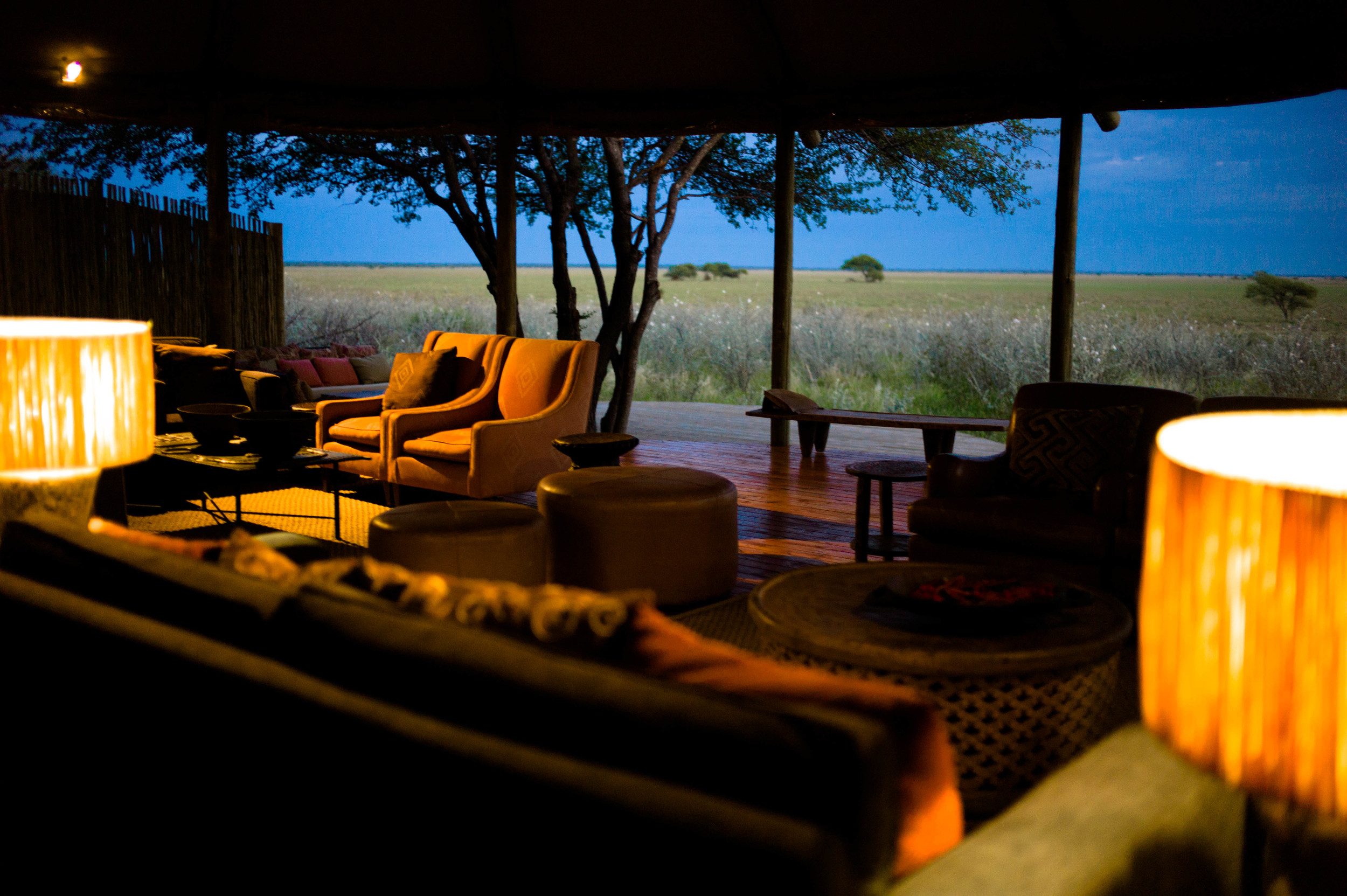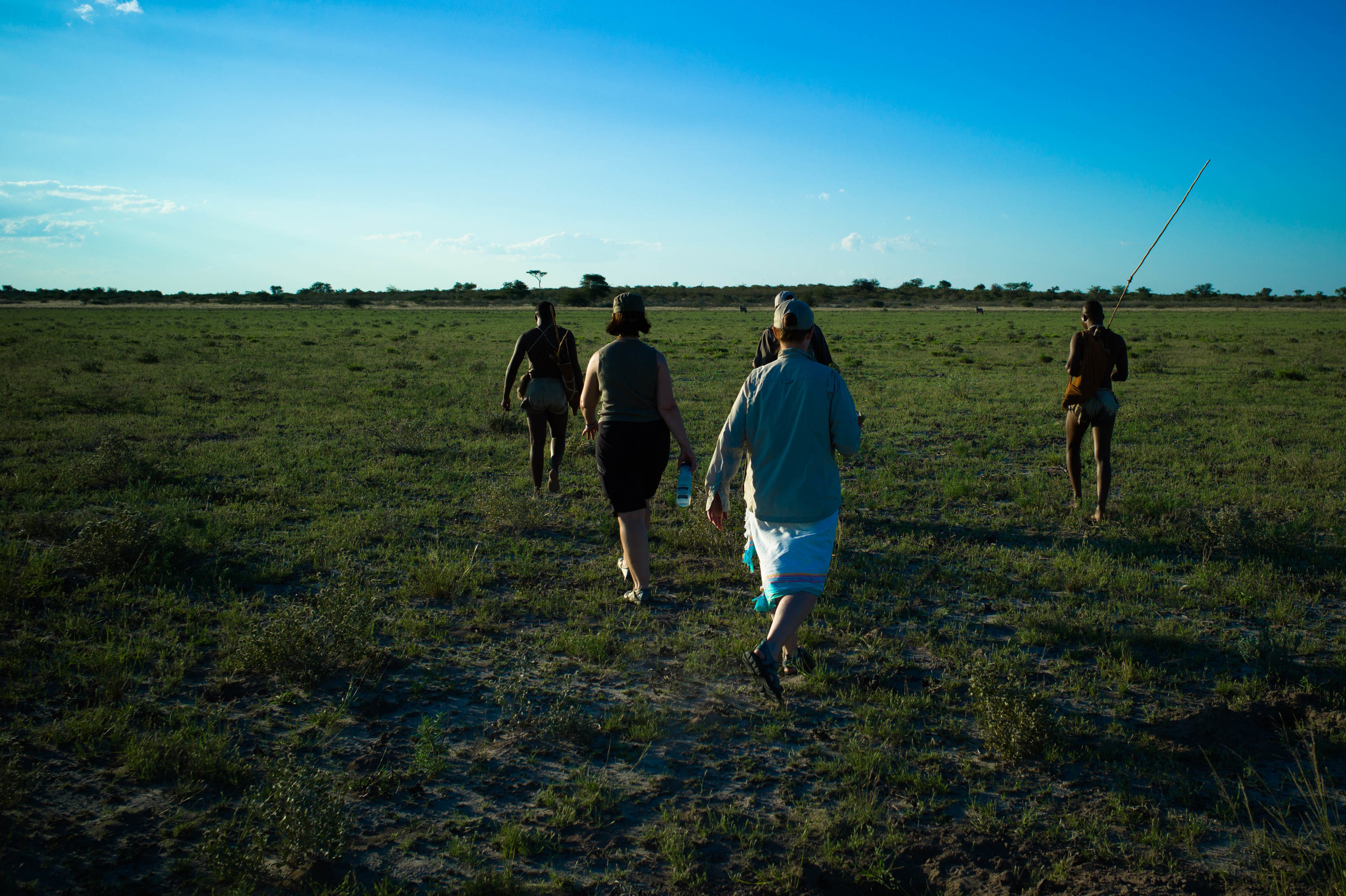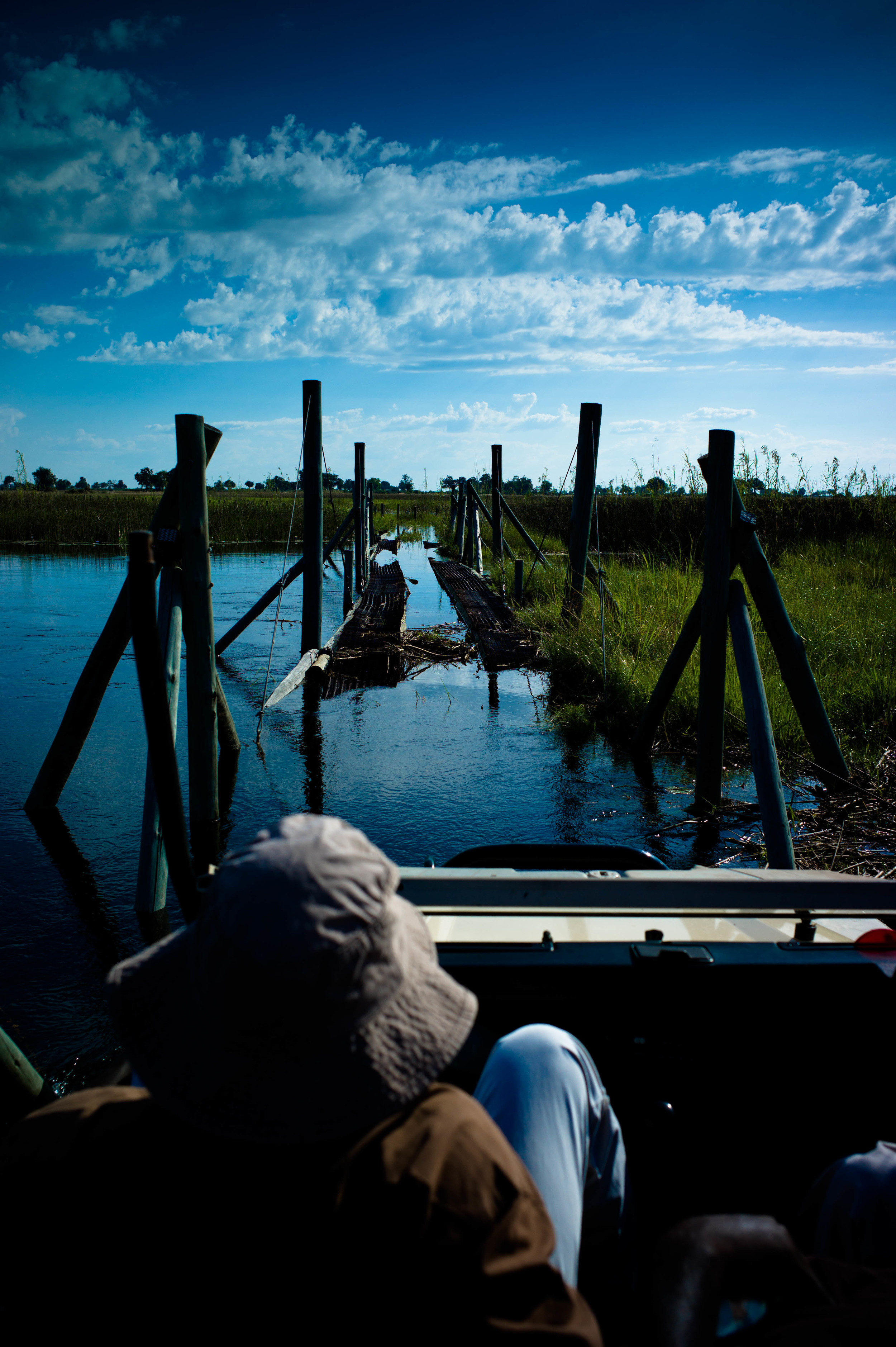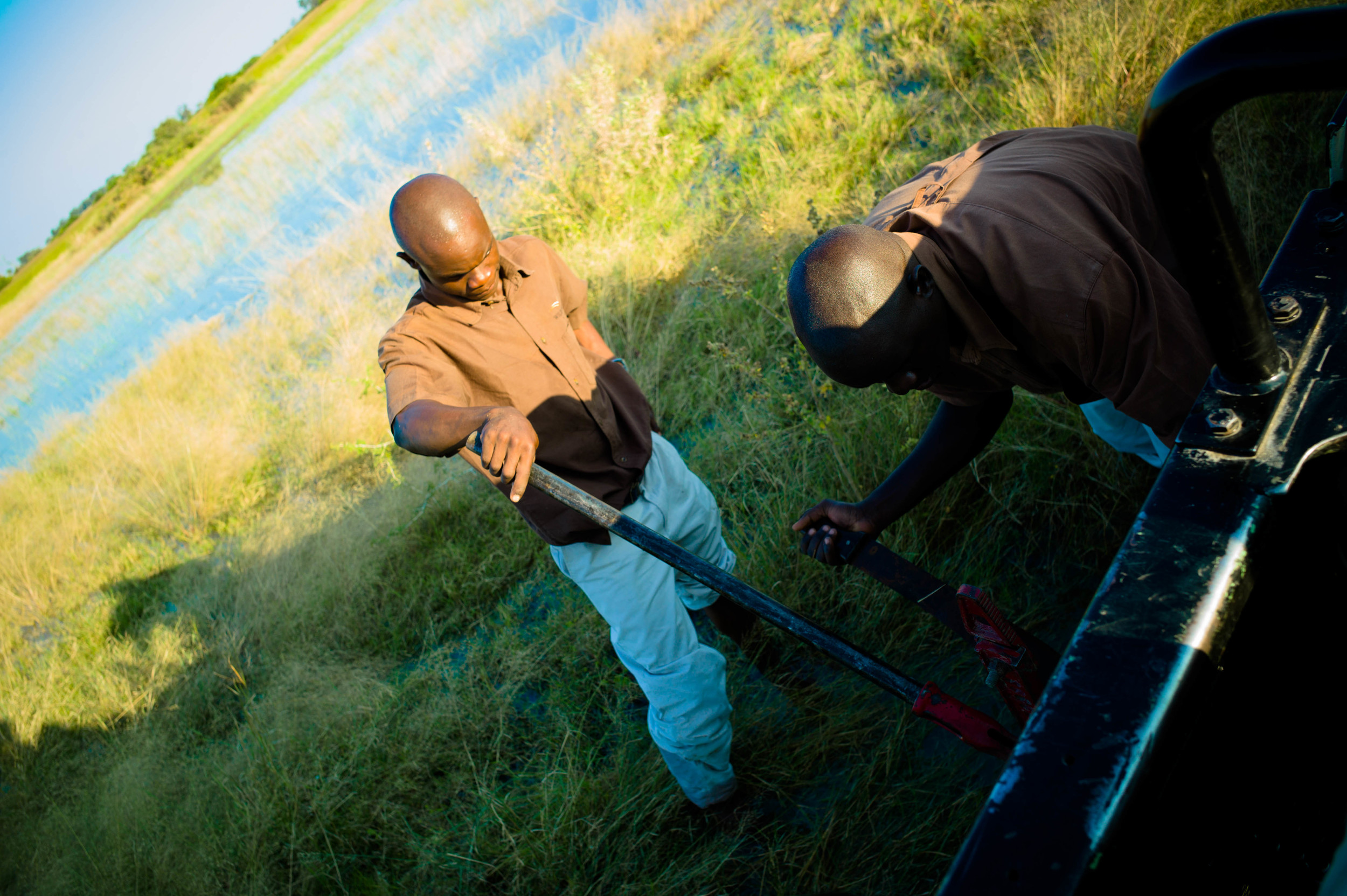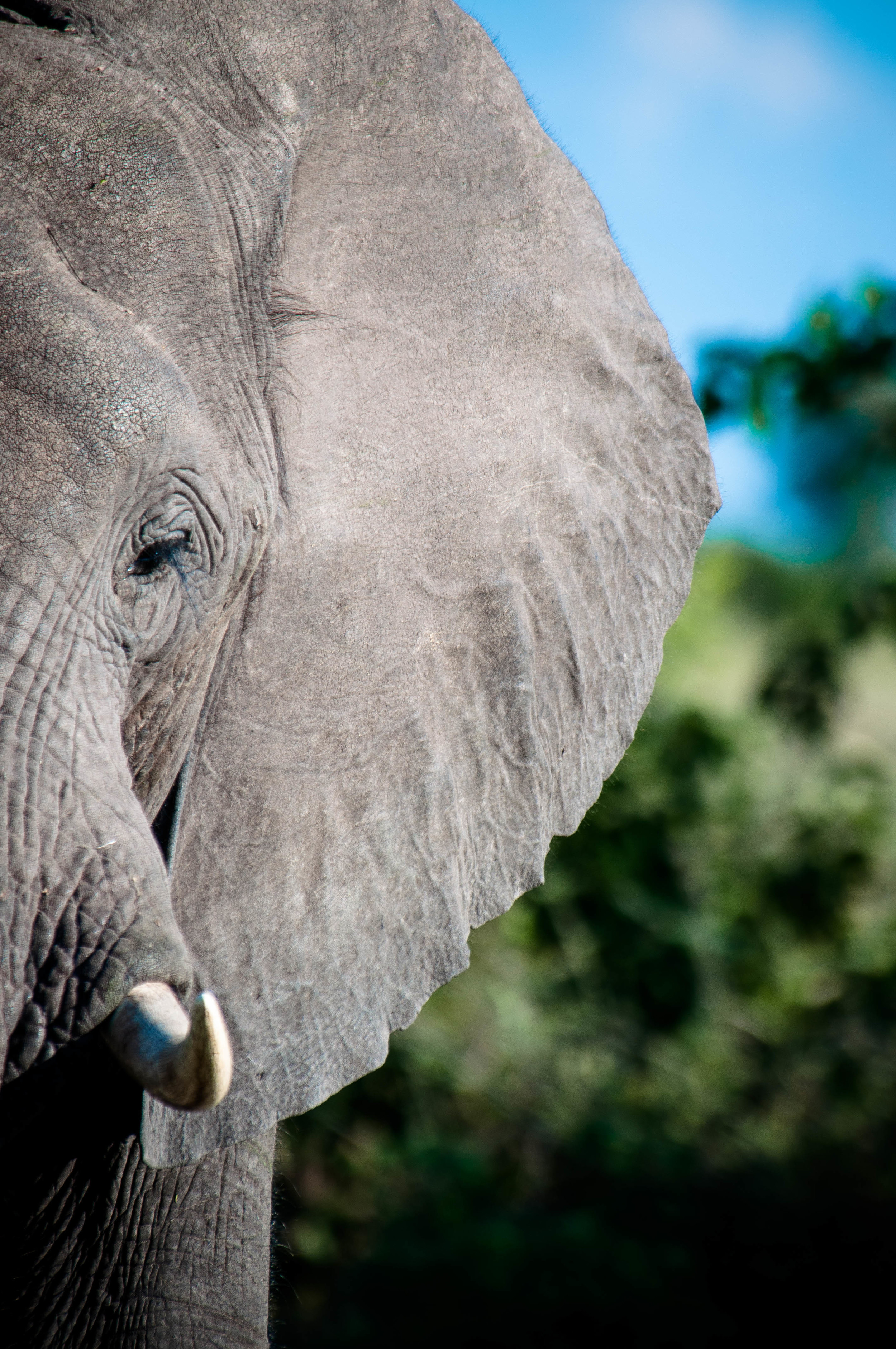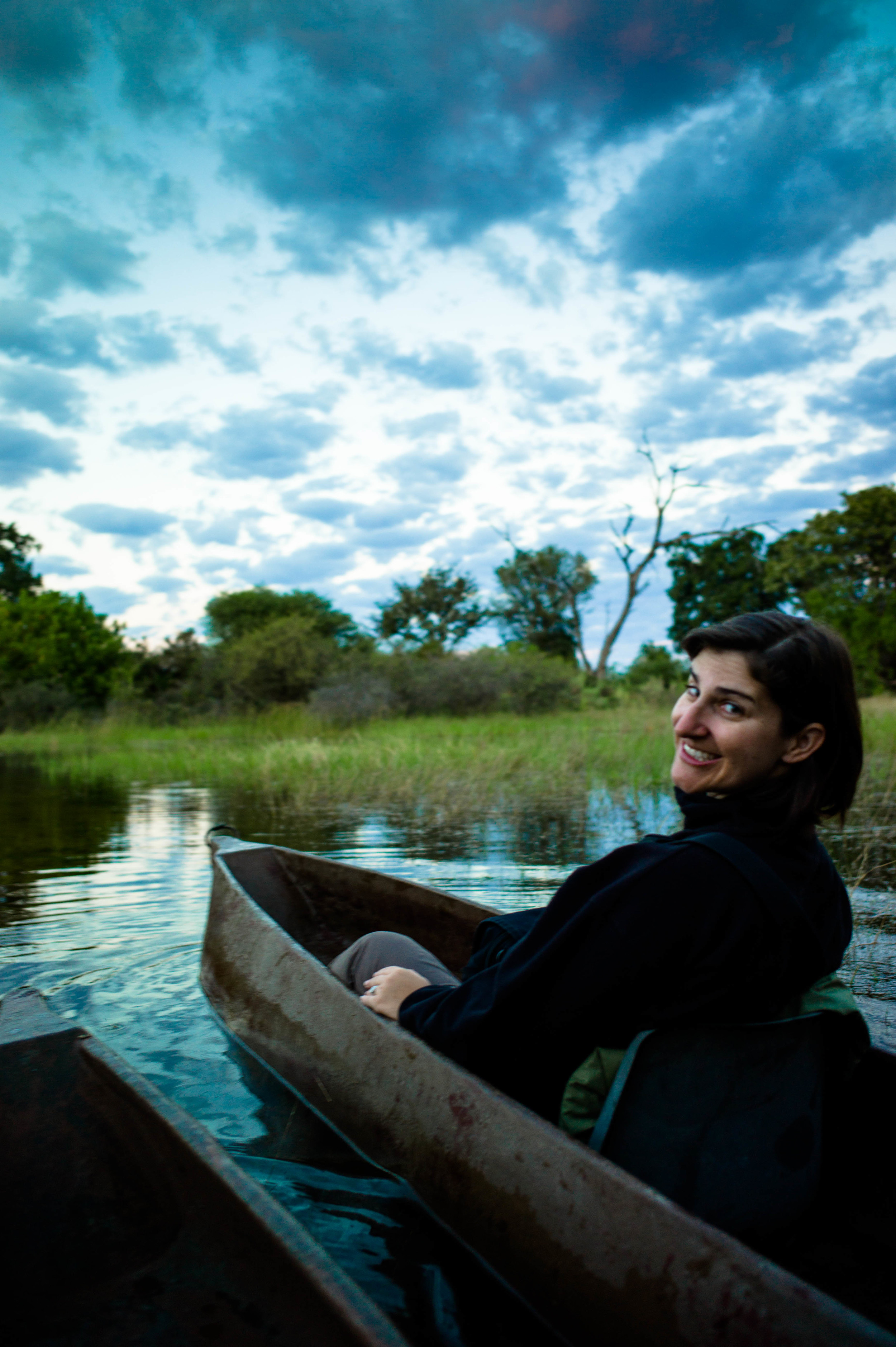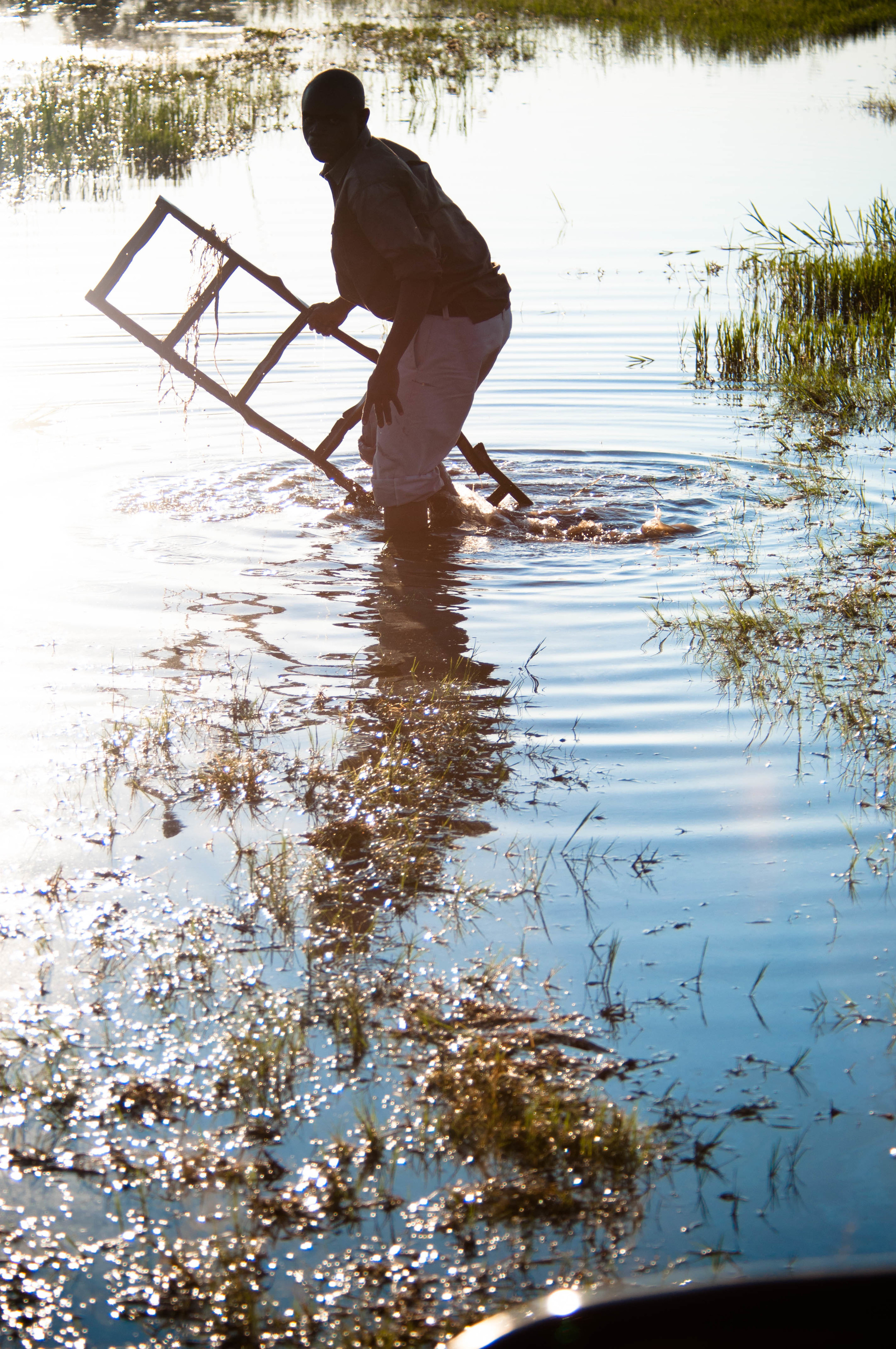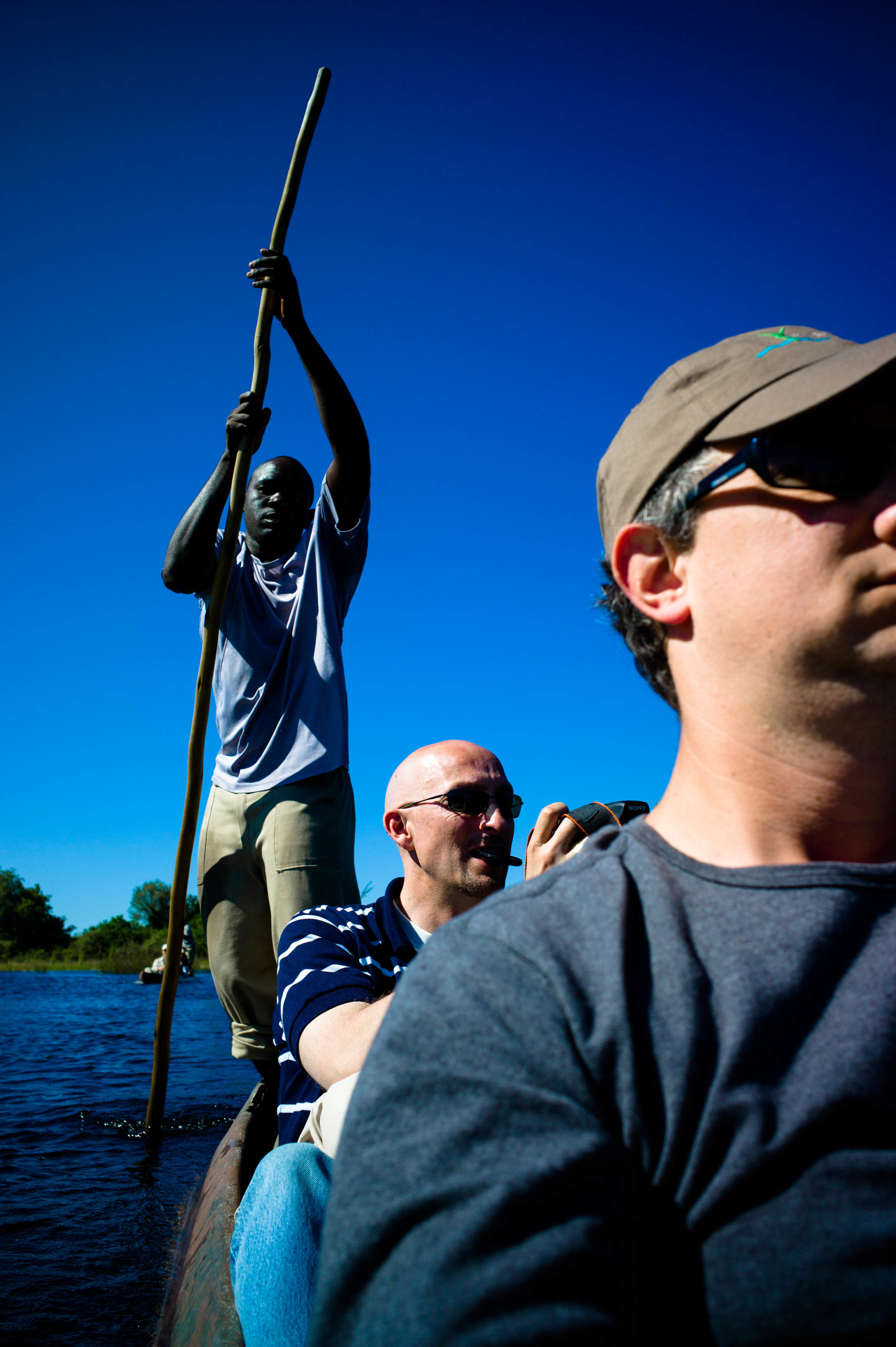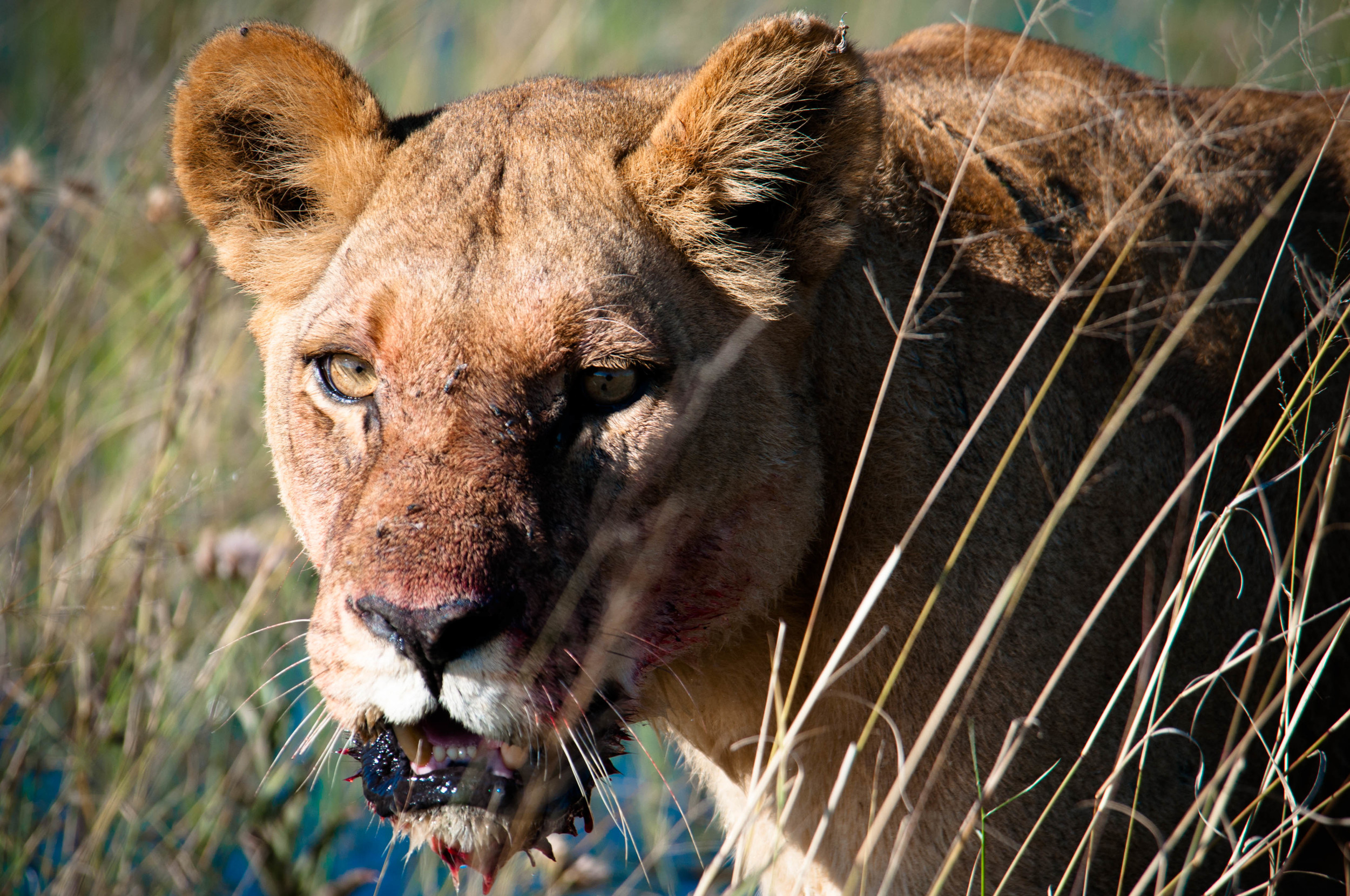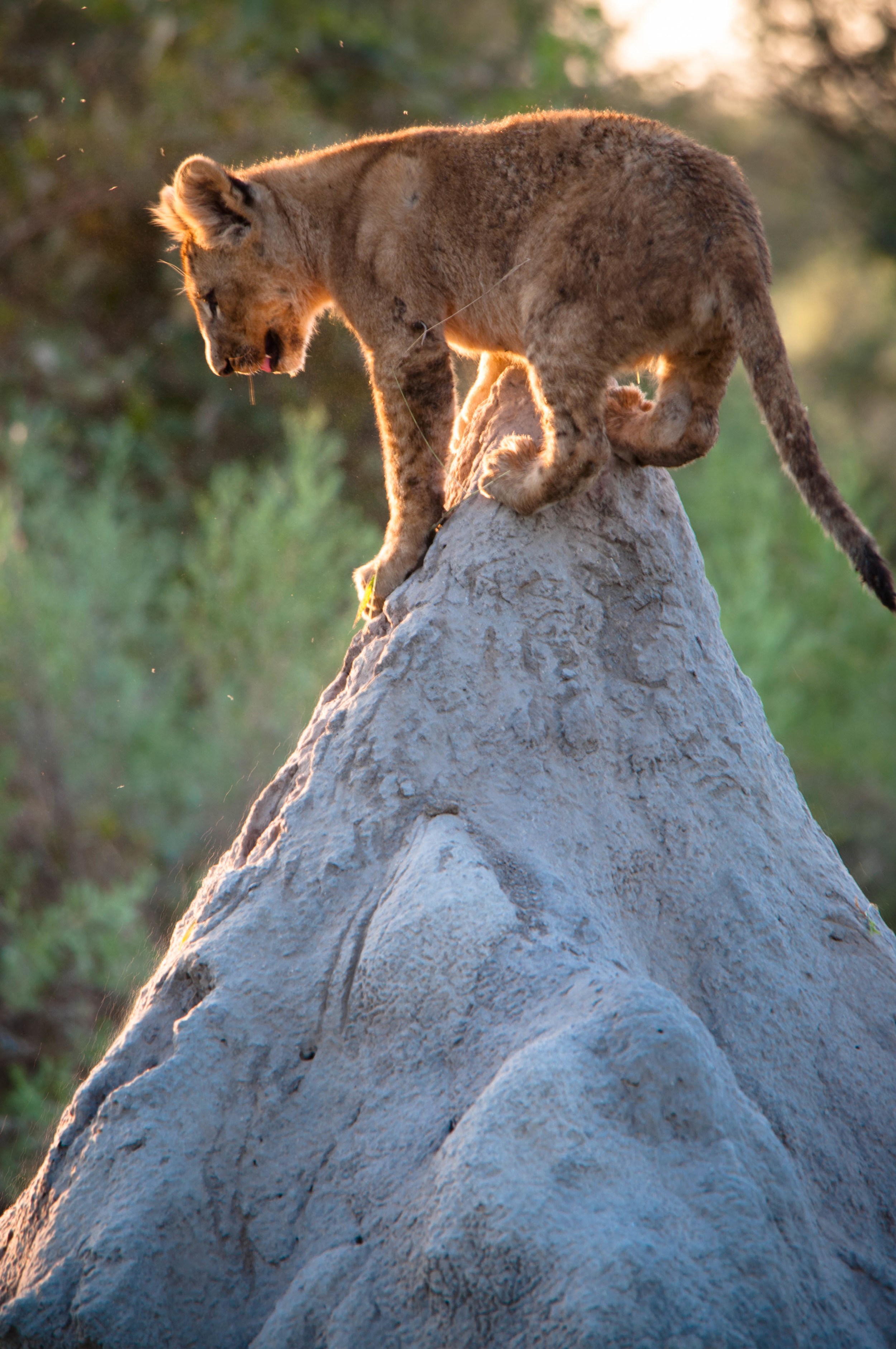A year or so ago we bought an African safari at an auction. Then we decided that a week was too short a time to take considering the flight time to get to southern Africa, so we enlisted the help of “Mama Africa” at Mills Tourism Consulting and added a couple more safaris to the list. We started in South Africa in the KwaZulu Natal region at a private game park called Zulu Nyala. After spending a week there we flew north to Botswana and stayed three days in the Kalahari desert at Kalahari Plains Camp. Finally, one more plane ride brought us to the Okavango Delta for a four night stay at Duba Plains Camp.
The Duba Plains Camp we visited is no longer open, but new Duba Plains and Duba Expedition camps are now open from Great Plains Conservation. Thank you Max, of Mahlatini Luxury Travel Specialists for letting me know and giving me updated links.
I’ll call out a link here now: if you’ve come to see pictures, here’s a link to them on Flickr: Africa 2010. Those are going to be better quality than what I post here.
Preparations
Cole was too young to come. Grandma and grandpa were kind enough to fly to Seattle to spend three weeks with Cole, which was great because he didn’t really have to disrupt his life. We’re very happy they could find the time to do this and they were wonderful with Cole the entire time.
We also had a serious weight limitation to contend with. The small charter planes we would be using required a maximum of 40lbs of baggage per person, including carry-on baggage. Now 40lbs may sound like a lot of weight, but when your empty suitcase weighs 18lbs – almost half – you need to go on a serious packing diet if you’re going to make it. One lightweight suitcase and one carbon fiber monopod later and I was well under weight. Let’s go to Africa!
It’s Good to be the King
Frequent Flyer miles are your friend. Especially when you’re flying for 19 hours. We had enough miles to do the trip in business class, which meant full reclining seats and unlimited movies. Also, the food was good – really good. While I should have slept in my comfy heated chair, I hardly ever get to watch movies any more so I spent most of my time looking at the screen. With a glass of Bordeaux and some roasted nuts I was content.
We finally arrived in Johannesburg. Here we spent the night so we could catch an early morning flight to Richard’s Bay. From there it’s a quick charter to Zulu Nyala.
I learned something new. It’s very common in Johannesburg to see houses and businesses surrounded by high walls topped with razor wire. Your first thought is that wow, crime must be really bad here. While crime on Joburg is high, that’s not the whole reason for the razor wire. The law here states that in order to prosecute someone for trespassing you have to prove that you’ve made a good faith effort to keep someone out. The razor wire is a legal formality. I wonder if anyone has ever done any kind of study to examine the culture impact of walling off every building like this.
Zulu Nyala
There is a place in our shower I like to call the "sea of despair". It lies right beneath my feet, which are protected by some nice shower shoes. Lately the sea of despair has been rising, threatening to flood the shower shoes. Good thing we leave tomorrow.
Zulu Nyala is a private game preserve. This means it isn’t on government owned land, the area is fenced, and they control which animals live on the reserve. For example, there are only three elephants on the reserve because there is not enough space for more. That’s not to say that Zulu Nyala is small: elephants simply require a lot of space. A nice benefit to controlling animal populations is you get to see a lot of wildlife. In the first day we saw elephants, giraffe, zebra, cheetahs and of course, lots of nyala antelope. Our guide Jason was the head guide at the reserve, so we got pretty good treatment. Food was excellent and they often had game dishes like impala and warthog.
Zulu Nyala doesn’t have lions. They have cheetah and leopard, but no lion. However, neighboring Phinda reserve has lots of lions, so one evening we did a game drive there. The lions were lounging on the runway tarmac – probably because of the warmth of the asphalt. We watched them until dusk and it was great to see them playing with each other.
One day on our game drive we came across a hurt zebra. The knee of her rear leg was horribly swollen and she wasn’t walking on it. Zulu Nyala staff decided to intervene. A team of veterinarians darted the zebra, drained the abscess on her leg, pumped her full of antibiotics and sent her on her way. We got out of our jeep and were able to watch the whole thing. One thing I noticed: this zebra was a baby and after we shot her with the dart the mother zebra kept her distance from us, but never once took her eyes off her baby.
After a week at Zulu Nyala it was time to leave. The game drives were becoming monotonous and it was time to move on. I think this is true of any animal park: three to four days at any one reserve is about right. Flight to Joberg, then to Maun, Botswana, and finally to Kalahari Plains camp in the Kalahari desert. But, I’m getting ahead of myself.
Getting to Botswana
Mid flight they were serving coffee. Usually I get some but I didn't want to wear it so I abstained. That was a good decision. A few minutes after coffee deployment there was some spectacular turbulence. The three guys to my right were all drinking coffee and it ended up everywhere. They (and the walls and seats) were covered in it.
I’ll admit: we had horrible airline luck the last time we left South Africa. In 2001 our travel to Zimbabwe was filled with legendary screw-ups and miscommunication, resulting in us having to miss about two full days of our trip. Would Botswana be any better? I assumed so, since Botswana’s government isn’t in the same mess as Zimbabwe. But, you need to stay sharp.
Air Botswana flies some really nice turboprop plains that look fairly new. Given this, I’m not quite sure why we walked right past one of these shiny new planes and instead boarded a while nondescript plane bearing only the word “Jessica” on it. As I walked past the cockpit I couldn’t help notice how old and rundown all the controls looked. When I got to my seat I noticed that all of the reading lights had been broken out and my seat recline button was missing entirely. I hoped they put a little more budget into the airframe maintenance. Despite the plane’s appearance it safely got us to Maun, where we boarded a flight from Seofane charters to Kalahari Plains Camp.
Kalahari Plains Camp
Dinner tonight was fantastic. Our chef's nickname is "shakes" and it is all I can do to not think of "shakes the clown". Damn good chef though. The wine tonight was great too, and this place has an open bar in the quite literal sense: we are invited to get behind the bar and make our own drinks if the bartender is not handy.
Kalahari Plains Camp was our first experience with a company called Wilderness Safaris and we left Africa with tremendous respect for this company. They run several higher-end safari camps. While “high end” in the United States usually means “excess”, Wilderness Safari camps are quite different. Sure, they’re nice, clean and modern (as modern as a tent can be). But, they’re also completely sustainable. All power is solar, water comes from deep bore holes, and sewage uses technologies like French drains to clean wastewater naturally so they don’t damage the ecosystem. The camps don’t pollute and aren’t even built using concrete or other permanent structures. If Wilderness Safaris ever decided to close a camp, they could disassemble it and leave no trace left behind. It’s a refreshing blend of “conservation without sacrifice” and I wish more companies around the world would practice it. Later on at Duba Plains camp we got a taste of just how good Wilderness Safaris is when it comes mastering logistics in the dynamic Okavango Delta. But I’m getting ahead of myself.
Russ and Olivia where our camp hosts and they were gracious, welcoming and fun. Food at the camp was very good, prepared by local chefs who live at the camp. Our “tent” was more like a cabin with insulated cloth walls. We had a rooftop balcony, running hot and cold water, and plenty of power for charging batteries, etc. At first I was worried about the lack of windows and mosquito netting – windows are just lightweight mesh. That’s before I leaned about one of the best things about the Kalahari desert: no mosquitoes. Normally staying at a remote game lodge means literally bathing in DEET bug spray. The stuff is terrible: it takes paint off just about anything and melts plastic. God knows what it does to humans long term. Recently I was told that applying DEET to little kids can cause them to have a seizure. The less of that stuff I see the better and I didn’t have to use any of it the entire time we were at the camp.
The Kalahari desert is big and flat. Like Kansas flat. You look around and are almost overwhelmed at the expanse of all of it. Several times I said to someone, “man, it sure is flat” and this became somewhat of a running joke because it is so obvious. The desert is composed of many uber flat “pans” with surrounding highpointsbetween them. The pans are enormous, and the highpoints are barely detectable beyond a minor change in the brush.
Game viewing in Kalahari Plains is different from Zulu Nyala. There are many large herds of antelope here, lots of ostrich, and jackals. Our guide Tshepo also has a thing for finding badgers. We had a bit of a start on day two. We ran into a group of folks who said they spotted a lion kill, so we went to investigate. We found the place where the lions had brought down an Oryx, but could find no trace of the animal or the lions. Until we turned around. The lions were hiding in the bush on the opposite side of the jeep, about ten feet away. It’s a little unsettling see them so suddenly so close.
One evening we took a “bushman walk”. This is a walk around the pan guided by actual African bushmen from a local tribe. The bushmen told us how they live and hunt on the plain and showed us poison arrows, how they carry water, and a dance they do in their village. We were about to go to their village and meet some more people when we got word of a cheetah sighting. We were all excited to see the cheetahs so we cut the walk short. We had intended to resume it in the morning, but we never did. That’s unfortunate – I really would have liked to see the village.
After three days it was time to say goodbye to Kalahari Plains. An hour in the air with Seofane air brought us to the Okavango Delta and Duba Plains camp.
Duba Plains Camp
Imagine a place with the most bugs you've ever seen. Now multiply the number of bugs by two hundred. Now you're in the ballpark of Duba Plains. We are in a swamp and everything moves. There are wasps here that are two inches long and mosquitoes appear as a thick fog. There are so many bugs making noise it sounds like a bustling city.
The Okavango Delta is the opposite of the Kalahari Desert. It’s wet and although fairly flat, hilly by comparison. It has a ton more mosquitoes too, since it’s basically a swamp. When we arrived at Duba Plains the camp hosts reported that there has been record flooding in the area. This made the logistics of game drives tricky: instead of getting on a jeep at the camp, you get on a boat that takes you to high ground where the jeeps are parked. I have never seen guides work as hard as they did at Duba. They have to be expert drivers, for they are forever driving in the water. Sometimes they drive in quite deep water: it was a daily occurrence for us to drive in water over four feet deep. The land rovers we drove in had modified air intakes that were well above the water line. They would run completely submerged and I still can’t figure out how the electrical systems survived. We got stuck on the first day and our guide Spike had to dig three wheels out of the mud to get us free. We faired far better than one of our companion jeeps: that group got stuck in the water at sundown for two hours.
Wildlife at Duba is much more diverse thanks to all the water. There are quite a few hippos and two prides of lions. The camp is known for colossal conflicts between large herds of cape buffalo and two lion prides, but the extra influx of water has changed the animal behavior somewhat. The buffalo were largely cut off from the camp because of the water, and the lions were forced to hunt other prey.
The lions were mating while we were there and we learned (and saw) all about it. The mail lion has a good thing going: he’ll mate with a female every fifteen minutes for five to seven days. No breaks for food or sleep; just good sweet lovin’ for a week. Then, he’s spent. You would think this would lead to lots of lions, but it doesn’t out here. Lions in the Duba prides have evolved very different behaviors from other prides. The female lions generally band together to help raise cubs together but at Duba the females have turned hostile to other mother’s cubs. Most cubs don’t survive beyond a few years. No one’s really sure why they have changed their behavior.
Despite this behavior, we did see lion cubs and they’re cute. They make little meow noises just like cats and love to play with each other. You can get quite close to animals in the jeep because for some reason animals don’t see the jeep as a living thing. Until you stand up. If you are right next to a bunch of lions and you stand up the lions will realize that the jeep is really just a big lunch box. You don’t want that because the only solution is a very fast getaway by your guide. The cubs aren’t quite as used to the jeeps so they are always watching us. Sometimes they get so curious about us they venture too close and the mother has to shoo them away.
Every day at Duba was an adventure because of the water. I don’t mean that in a bad way – it was really interesting to see how Duba would handle the next curveball nature threw its way. Two days in, the boat had to go upriver to get more diesel for the jeeps. With no boat we would be unable to do any game drives so the staff shuttled us to the jeeps in moccoros – hollowed out log canoes. I was a little worried about tipping and dumping $20k of camera gear in the water at first, but ten minutes into my first ride I was hooked. Riding in a moccoro is so quiet and picturesque that I fell in love with it.
Toward the end of our stay we had a treat: a lioness had just killed a kudu and walked right in front of us, chin dripping with blood. Our guide explained that she has likely hidden her cubs during the hunt and now she is going to fetch them. We positioned ourselves just right and sure enough, soon you could hear the soft meows of the cubs and they can bounding out of the brush. The cubs swam behind mom, with one hanging onto her tail with its teeth. She walked the cubs back probably half a mile to where she had killed the kudu, and we were able to watch the cubs play with the animal (the cubs weren’t eat meat for nutrition yet; they were just learning what to do).
After four days of Duba it was time to go home. We missed our kid and we were tired of putting on bug spray. I managed to snap almost 2500 pictures, of which I published about 180 on Flickr. You can see them by clicking this link:
I’ve put a few select photos directly on this post as well. If anyone is planning to go to Africa on safari I would highly recommend a camp run by Wilderness Safaris.




